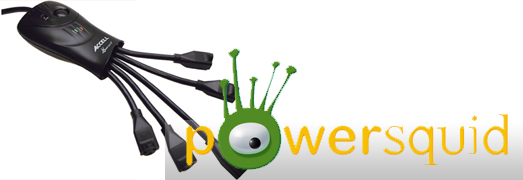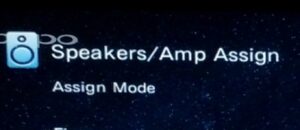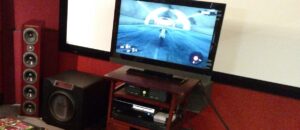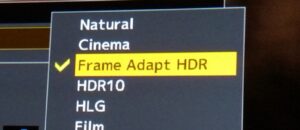It’s a familiar sight in many home theaters – a grizzly wire spaghetti with multiple power strips, each half full thanks to wall warts and oddly-sized adapters. Fortunately, Accell offers up the PowerSquid to help solve that problem.
If you’re not familiar, the PowerSquid is a new type of surge protector designed to keep those wall warts from hogging spaces. It earns the name based on its appearance. The device has five outlets, each of which is a separate cord that attaches to the base.
Up until a few weeks ago, I had a pair of surge protectors behind my desk that were occupied with a surprisingly small number of cables. Of course, half of those were some sort of weird wall wart or just cables that were a little larger than usual. And of course, one of them was just to give a little more distance so that everything could reach.
The folks over at Accell were cool enough to supply me with a PowerSquid surge protector/power conditioner to check out, and I have to say that I’m very happy with it. What was once a mess of cable is now… Well. it’s still kind of a mess, but that’s not the point.
I’m down from two power strips to just the PowerSquid, which has not only the reach that I needed, but handles those transformer plugs nicely. The look isn’t as cluttered as I thought it might be at first, and it hides nicely behind my computer desk.
I played with the PowerSquid a bit behind my TV and found that it worked pretty nicely there as well. I didn’t have as much trouble with cords there since only the Wii uses one of those pain in the ass plugs and, well, it’s a Wii. Keeping the console unplugged doesn’t actually cut down on the playtime. It collects dust just as well without being plugged in.
The PowerSquid isn’t just about simplifying the back of your computer or home theater, though. Accell boasts that the built-in power conditioning filter can clean up radio frequency and electromagnetic interference to eliminate noise in your TV signal.
I didn’t notice too much of a difference there, but on my ancient set (hey, at least it’s HD), it’s probably unnoticeable anyway. Where I did notice a big difference was in the powered speakers that I use for my computer. I’ve been using a pair of KRK Rokit 5s for audio since back when I was recording with my band. They’re designed as studio monitors, but they make great computer speakers, especially since music is really all I listen to through speakers. Gaming goes through the headphones.
What I never noticed up until I hooked up the PowerSquid is that there was a bit of a buzz in my speakers. It’s one of those things that you don’t notice when you’ve been living with it for so long, or like how your own body odor isn’t offensive to you but absolutely slays everyone around you.
I thought I might be imagining things, so I attached one speaker through the old power supply and one with the PowerSquid, and – Kablam! — the buzz was gone. Now I really couldn’t go back to how they sounded before. It was a small buzz, but now that I know it’s there, it’s all I can hear. So, the PowerSquid stays behind my computer permanently.
I’m really happy with how the PowerSquid is working out, and I honestly wouldn’t mind spending the $35 if all it did was help me to organize the mess of power cords behind my PC. But it also does more, and that’s way boss.






William Henley
I have been thinking of a way to re-invent the power strip for years. I have four power strips tucked behind my tv/computer (one is a battery backup), and could probably drop to just a battery backup and surge protector if it wasn’t for all of these plugs being taken up. I have actually tried different strips myself that rotate the plugs or something, to try to take care of the issue. This is brilliant, and I am surprised no one has done this before. At $35, it may be worth it to clean up the mess of wires.
Dennis Lafontaine
I have seen power strips with offset plugs but in my current setup, I have ONE, single wall wart that would occupy more than one hole. Walmart (or Home Depot) sell 12 inch extension cords for about $3. Wall wart problem solved.